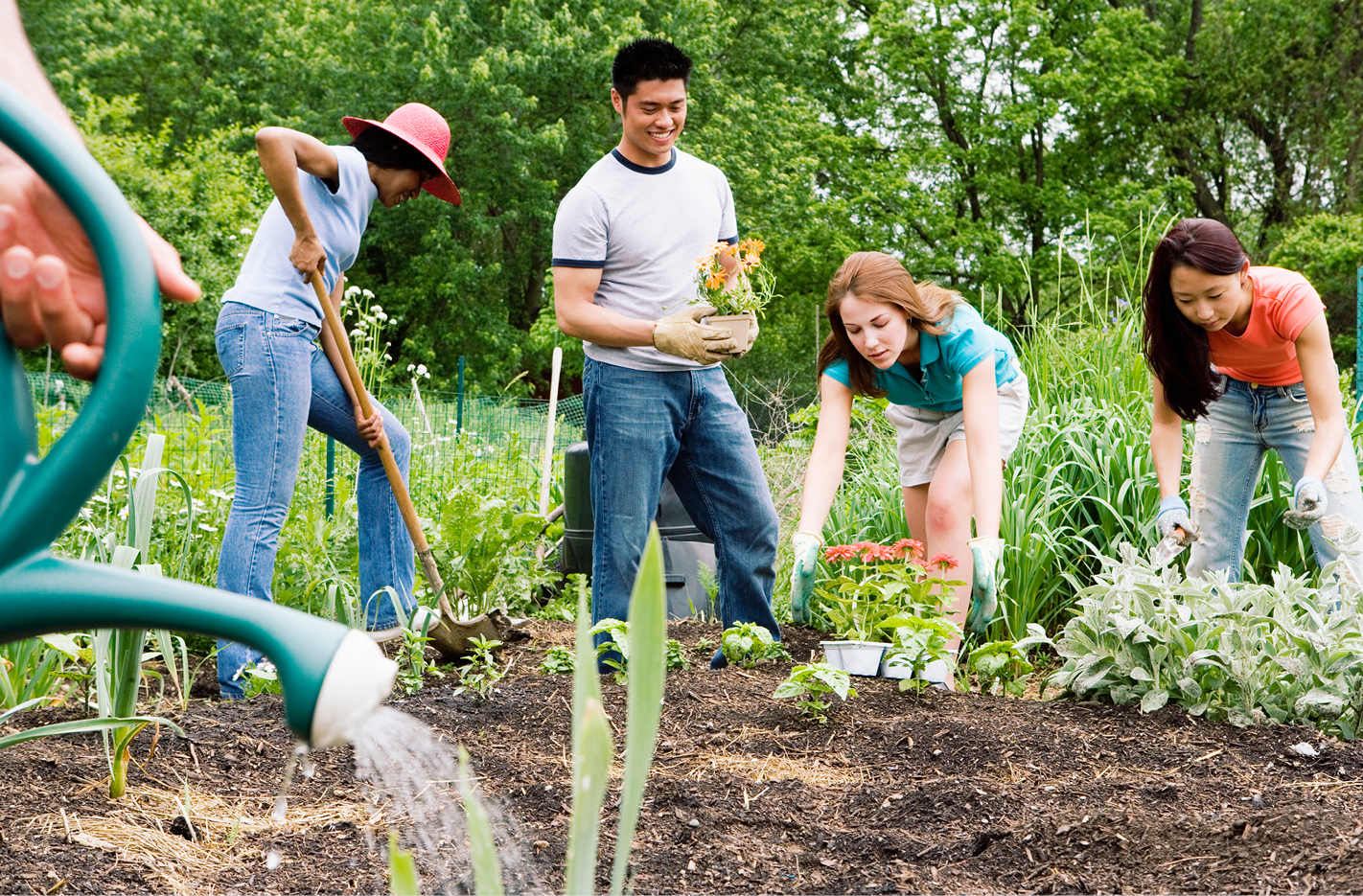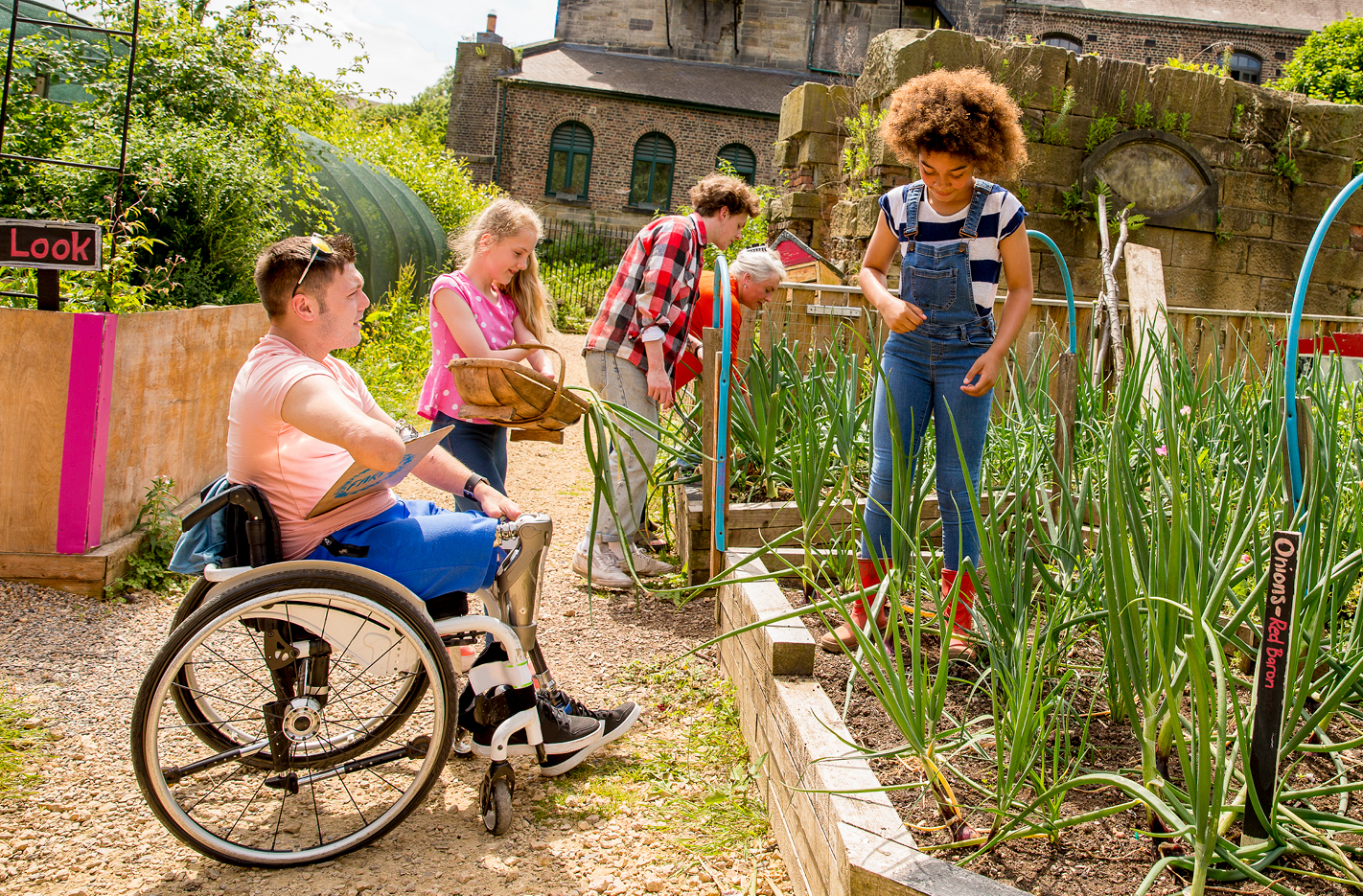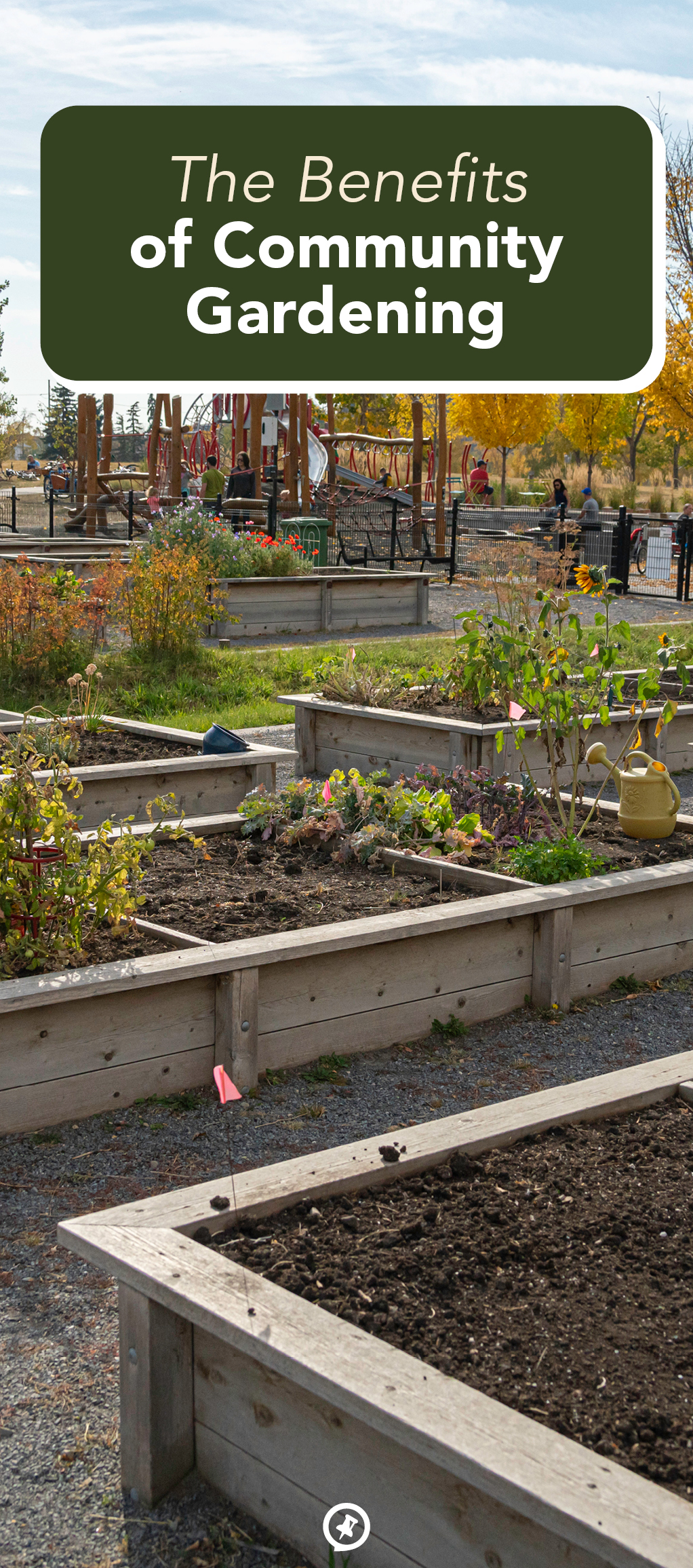The Benefits of Community Gardening
For more than a century, community gardens have helped bring people together and better the health and social fabric of their neighborhoods.
The concept of community gardening and green spaces began in the late 1800s as a way for cities to reclaim abandoned plots of land and revitalize urban neighborhoods. Here city apartment or condo dwellers could come together to share valuable resources and information with their neighbors while planting flowers, fruits, vegetables, and fresh herbs for their own consumption. As of 2022, there were more than 29,000 community gardens in the one hundred largest American cities. However, community gardens are no longer just for urbanites. They are also located in rural and suburban neighborhoods and even in schools and hospitals.
There’s a lot to gain with the existence and expansion of green spaces and community gardens. They not only help beautify a neighborhood and contribute to a cleaner environment but also promote a healthier lifestyle and social inclusion. Here are just some of the benefits you and your community can experience with such a garden.

Health benefits
A community garden can provide a plethora of physical and mental benefits.
Provides fresher foods
In urban neighborhoods, where access to garden-fresh foods can be limited, community gardeners have better access to fresher, higher-quality foods and reportedly consume 37.5 percent more fruits and vegetables than nongardeners.
Relieves stress
Gardening provides an opportunity to connect with nature by enjoying the peace and serenity of the outdoors, breathing fresh air, and escaping from the stress of daily life. There is a strong correlation between individuals who participate in community gardening and their overall sense of well-being.
Increases exercise
Another health perk of gardening is that it provides a form of aerobic activity due to the physical exertion it requires. An increase in activity and exercise can help reduce the likelihood of developing medical problems like obesity and diabetes. In fact, one study showed that men and women gardeners were 36 and 34 percent, respectively, less likely to be overweight or obese and have lower BMIs than their nongardening counterparts.
Reduces carbon footprint
Plantings from community gardens help reduce pollution. They add oxygen to the air and absorb rainwater, which prevents pollutants from being deposited into lakes and rivers. Gardening locally also helps to reduce the distance food travels. All of this minimizes one’s carbon footprint.
Reduces food insecurity
Because community gardening focuses on a local level, food yielded from the gardens helps reduce food insecurity while simultaneously increasing the quantity of food available to lower-income households. In fact, in a case study published by the Journal of Community Health, participants expressed concern about food insecurity less often during the seasonal harvests than before the beginning of the gardening season.

Social benefits
In addition to the aforementioned health benefits of community gardening, you can reap many social benefits through the practice.
Builds social capital
Community gardens contribute to social capital by connecting neighbors, fostering community, and providing a sense of ownership and pride. They also offer the opportunity to meet people from all backgrounds—expanding awareness of different cultures, races, and social classes.
Encourages social gatherings and family time
Community gardens are more than just gardening. They offer a welcoming place for neighborhood or family gatherings, provide opportunities for members to raise money to keep the gardens operational, and create awareness and goodwill between neighbors. In addition, family members who spend quality time gardening and eating healthier together can grow deeper relationships. It’s a great way to connect with your kids, helping them plant, maintain, and take responsibility for a garden of their own.
Curbs crime rates
Neighborhoods can even experience a reduction in crime rates because community garden members are invested in creating a safe space for their residents. Some evidence suggests that the perception of security in a neighborhood increases once a community garden is built.
Provides educational opportunities
Many community gardens offer classes where adults can discover new techniques to help increase their harvests. Children can also learn to better understand where their food comes from, how to care for their garden, and the basics of the environment.
If you have been hankering to put your green thumb to work planting your own fruits, vegetables, plants, and flowers but do not have the space or capacity to do so, joining a community garden may be the perfect solution for you. Get your gardening gloves and hoe ready, and reap the health and social benefits that a community garden can provide.
To find a community garden near you, visit communitygarden.org/garden


















